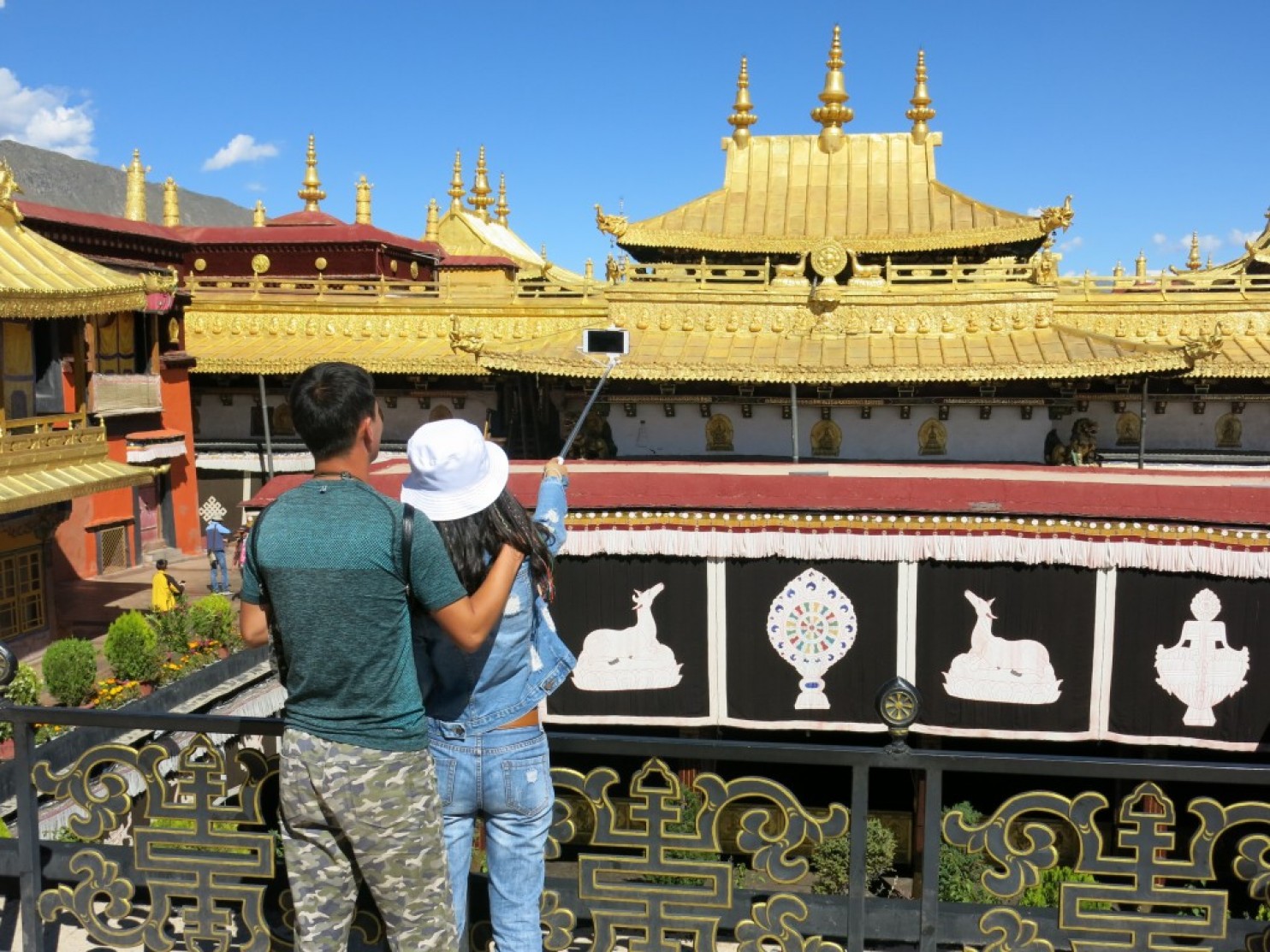
(TibetanReview.net, Oct09, 2016) – The number of tourists visiting Tibet Autonomous Region (TAR) is not as impressive or as downright scary – depending on whom one asks – as suggested by the Chinese government’s official data, according to a washingtonpost.com report Oct 6. The truth is, the figure of tens of millions of visitors is, by official admission, inflated by a factor of something like 2.75, the report said.
The report cited the government of China as saying 23 million visitors will enter the TAR this year, an 11-fold increase in a decade since the opening of the Qinghai-Tibet Railway, and against the region’s current population of 3.2 million. And it has projected arrivals to rise to 35 million visitors by 2020. The report further cited officials as saying tourism already makes up one-fifth of the TAR’s economy, has created 320,000 jobs, and is helping to fuel double-digit rates of growth.
The truth is, the numbers just don’t add up, the report has found. It noted that 23 million tourists would equal something like 63,000 people arriving every day on average, with the majority of tourists arrive during the peak summer months, which see much higher arrivals. And there are just not even enough planes, trains and buses to bring in that many people, let alone there being that many hotel beds in the Tibetan capital Lhasa.
And while at the must-see Potala Palace, the daily limit for tourist entries has been steadily raised from just 850 in 2003 to 5,000 now, that would still leave an awful lot of people visiting Lhasa without seeing inside its most iconic landmark, the report pointed out.
Confronted with these questions, tourism officials in Tibet have told the report that the official numbers actually reflect the number of person-visits. In other words, if someone visits three places in the TAR, such as Lhasa, Shigatse and Nyingtri, they will be counted three times.
“The places that a tourist went and spent money are all being counted,” the report quoted Wang Songping, deputy director of the Tibet Tourism Development Commission, as saying.
Alternatively, officials have told the report, officials multiply the number of arrivals to Lhasa by a factor of 2.7 or 2.8, calculating “an average probability” to account for the fact that most people visit two or three places.
So, when asked whether one could then just divide the official numbers by 2.75 to get a rough estimate of the number of visitors, officials had responded “yes”. However, when approached for clarification on a later day, officials have said there is no way to estimate the number of individual tourists visiting the TAR, and this number was not being directly measured.
“We do not have the numbers of tourists, and we cannot provide that,” Wang Songping was quoted as saying. “We count based on an average probability but not a number of tourists. You cannot divide 20 million people by 2.75, there is no calculation like that.”
Still, 23 million, Wang’s projection for 2016, divided by 2.75 makes 8.4 million visitors expected this year, the report said.
Taking everything into account, the report submitted that 8 million tourists this year seemed just about possible, albeit being still something of a stretch.
The report cited a Western expert, who spoke on condition of anonymity for fear of complicating his access to Tibet, as saying the figures had been notoriously inflated for years. The purpose is stated to be to make a show of meeting official targets to enhance the reputation and perceived performance of the tourism industry and to ensure personal promotions within the competitive government hierarchy.
The report cited other experts as saying the lack of transparency and accountability in the system might also cast doubt on other official data from the TAR, including the economic growth numbers.
Besides, China has been systematically underreporting the number of ethnic Chinese migrant workers arriving in Lhasa every year, who could be outnumbering and overwhelming the number of Tibetans living in the capital. The report cited the US Congressional-Executive Commission on China as saying in its 2010 report, “Chinese government data appears to underrepresent the number of Han who are present in Tibetan autonomous areas, and to report statistics that are inconsistent with each other and with observations by Tibetan and foreign experts.”


